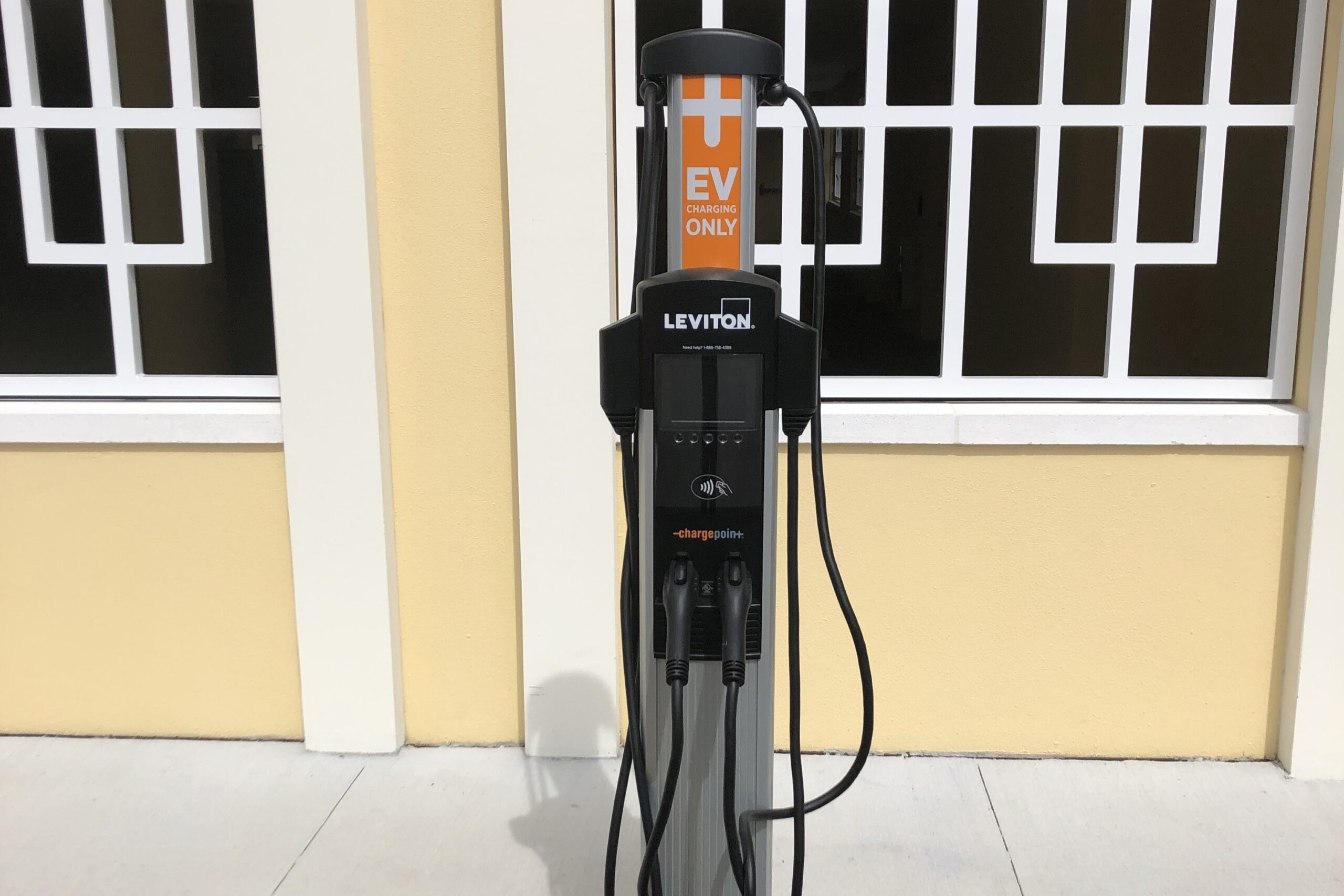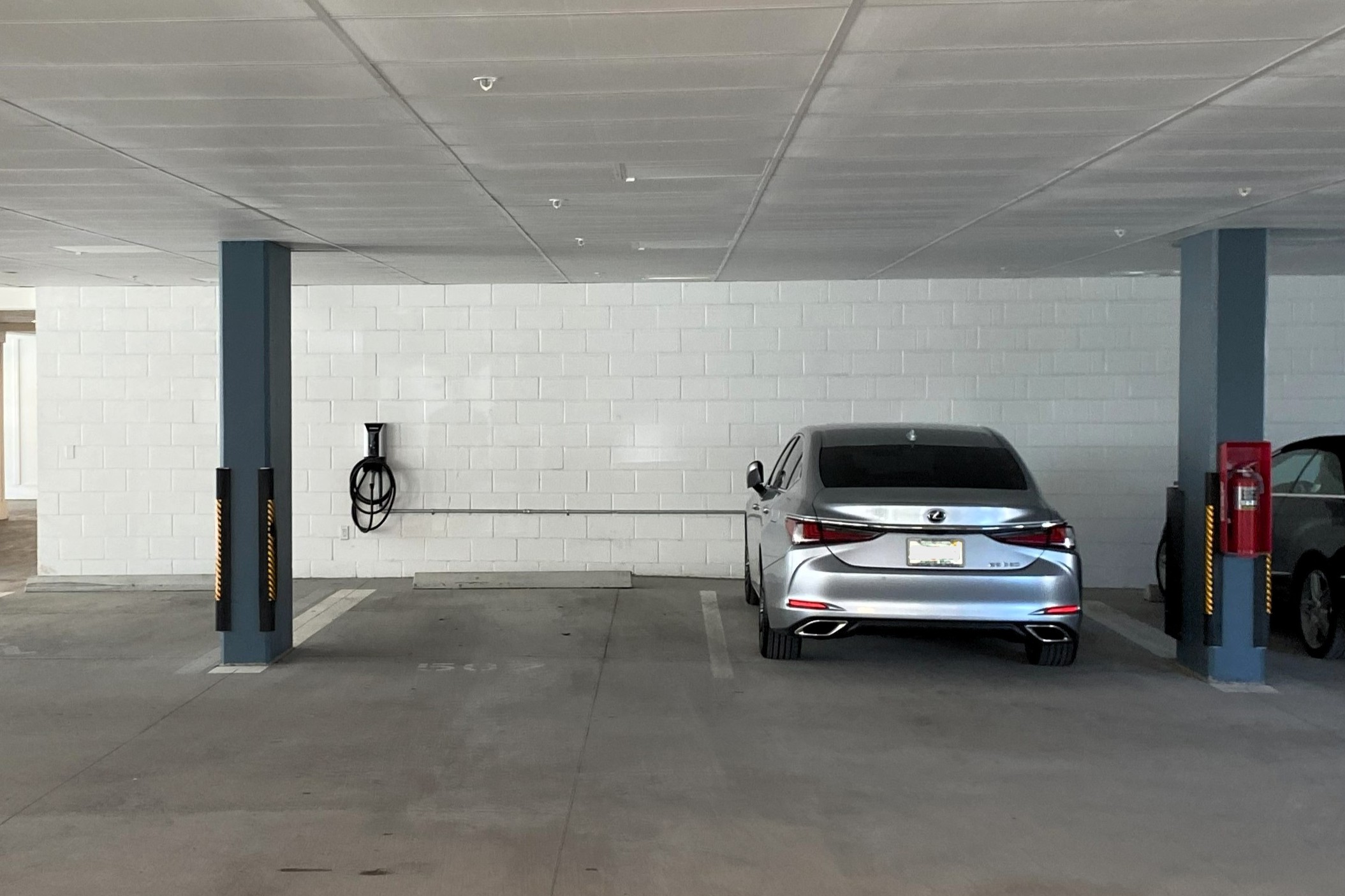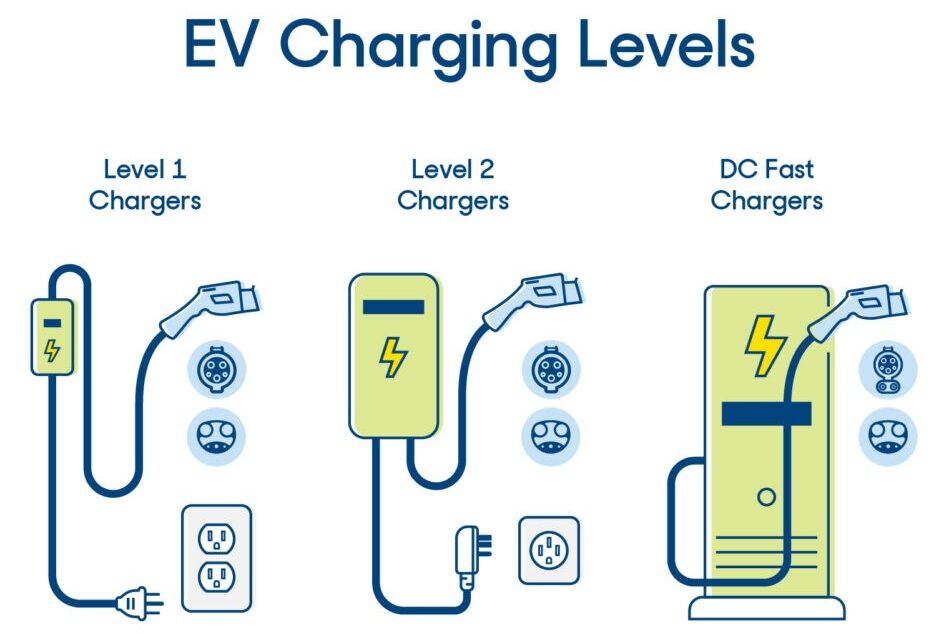By Mark D. Layfield, PE, LEED AP

Level 2 Charging Station at Village on the Isle: Emerald Terraces Hybrid Homes – Venice, FL
Electric vehicles (EVs) are becoming increasingly popular as a sustainable alternative to traditional gasoline-powered cars, trucks, and vans. In order to provide the necessary electrical infrastructure to accommodate EV charging, building owners and operators must first understand the basics of EV charging, including the three standard levels of charging and their associated charge rates.
Level 1 charging is the most basic form of EV charging and uses a standard 120-volt, single-phase AC outlet, which is a “standard receptacle,” commonly found in homes. This type of charging is convenient because it doesn’t require any special equipment; an EV can simply plug into a regular household outlet using the charging cable that comes with the vehicle. Note that it is recommend that the receptacle be on a dedicated 20-amp electrical circuit that feeds no other receptacles or equipment. Level 1 charging is the slowest method and can be thought of as a “trickle” charge. It typically adds about 2 to 5 miles of driving range per hour of charge. This means that fully charging an EV with a large battery can take up to 40-50 hours. However, for hybrid vehicles (that use both gas and electricity) or for short-trips of limited mileage around town, this type of charging may be acceptable, especially when charging the vehicle overnight.
 Level 2 Charging Station at Vicar’s Landing at Oak Bridge – Ponte Vedra Beach, Florida
Level 2 Charging Station at Vicar’s Landing at Oak Bridge – Ponte Vedra Beach, Florida
Level 2 charging uses a 208 or 240-volt, single-phase AC outlet, similar to those used for large household appliances like electric ovens and clothes dryers. This type of charging can be considered a “rapid home charge” and requires the installation of a Level 2 charger and an appropriate outlet and circuitry, which commonly range from 30-amps up to 80-amps. Because of the larger load and circuitry required, an evaluation will likely be necessary to make sure the electrical distribution system has adequate capacity to accommodate the EV charging load. Level 2 chargers are significantly faster than Level 1 chargers, adding 10 to 60 miles of range per hour charged. This allows most EVs to be fully charged in about 4-10 hours. Level 2 charging is ideal for home use, workplaces, and public charging stations where vehicles are parked for extended periods.
Level 3 charging, also known as DC fast charging, is the fastest method of charging an EV. It requires a 480V, 3-phase AC connection to the charger, but then uses direct current (DC) to charge the vehicle’s battery, by-passing the onboard charger that converts alternating current (AC) to DC. Level 3 chargers are typically found at public charging stations along highways and in urban areas, making them perfect for long-distance travel and quick refueling stops. These chargers can add 60 to 100 miles of driving range in just 20 minutes. Currently, not all EVs are compatible with Level 3 charging, and although most manufacturers are working on improving compatibility and efficiency in future EVs, universal compatibility with level 3 charging is not guaranteed.

Image Credit: TVA EnergyRight
The choice of EV charging level depends on various factors, including daily driving habits, the type of EV owned, and the availability of charging infrastructure. For short daily commutes, Level 1 charging may be sufficient. For regular daily use and quicker charging times, Level 2 charging is more appropriate. For long trips and rapid refueling, Level 3 charging is the best option.
Mark is a Licensed Professional Engineer, a LEED Accredited Professional, and Partner at Reese Hackman.
